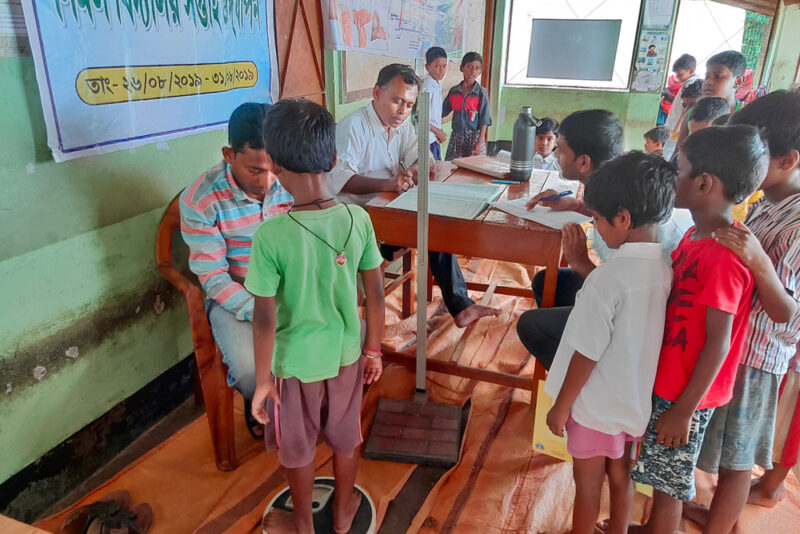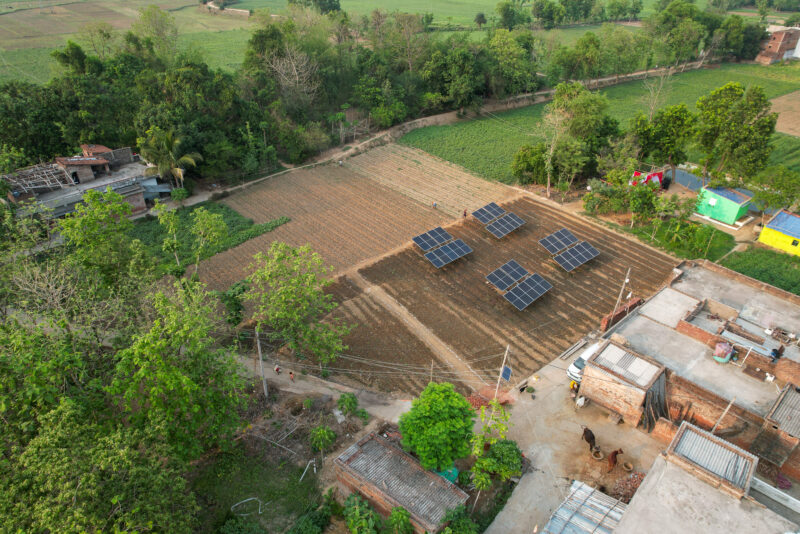Transformative Technologies Offer Bihar a Path to Net-Zero Agriculture
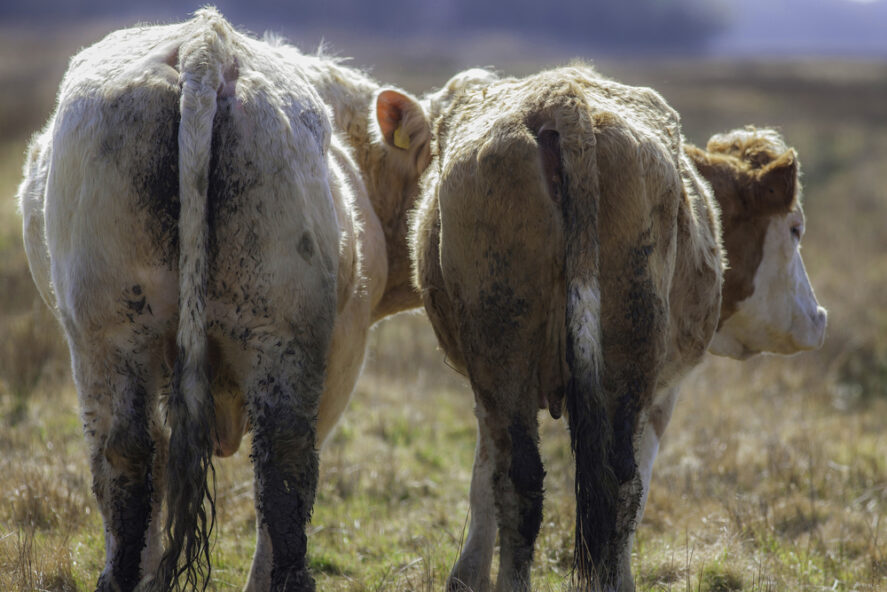
Bihar can make significant progress toward its goal of sustainable development by implementing three transformative technologies in the state’s agricultural sector, according to the Tata-Cornell Institute for Agriculture and Nutrition (TCI). In a special policy brief, the Institute shows that Bihar can reduce the greenhouse gas emissions associated with rice and livestock production while maintaining or even improving productivity.
The policy brief presents research conducted as part of TCI’s project on Zero-Hunger, Zero-Carbon Food Systems. The project aims to create a roadmap for reducing agricultural emissions in Bihar without sacrificing productivity. Nationwide, agriculture contributes 20% of India’s greenhouse gas emissions. The country also suffers from high rates of malnutrition. This is especially true in Bihar, where nearly half of children under five are stunted and underweight.
“Our research shows that alternate wetting and drying, advanced breeding techniques, and anti-methanogenic feeds can help Bihar to lower its agricultural emissions without damaging productivity.”
According to TCI research, Bihar could reduce emissions by 9.4-11.2 metric tons each year by adopting alternate wetting and drying for paddy cultivation, advanced artificial insemination for cattle breeding, and anti-methanogenic feed supplements in its livestock sector.
“As India confronts the twin challenges of reducing hunger and mitigating greenhouse gas emissions, there is a real danger that efforts to achieve one goal will undermine the other,” TCI Director Prabhu Pingali said. “Our research shows that alternate wetting and drying, advanced breeding techniques, and anti-methanogenic feeds can help Bihar to lower its agricultural emissions without damaging productivity.”
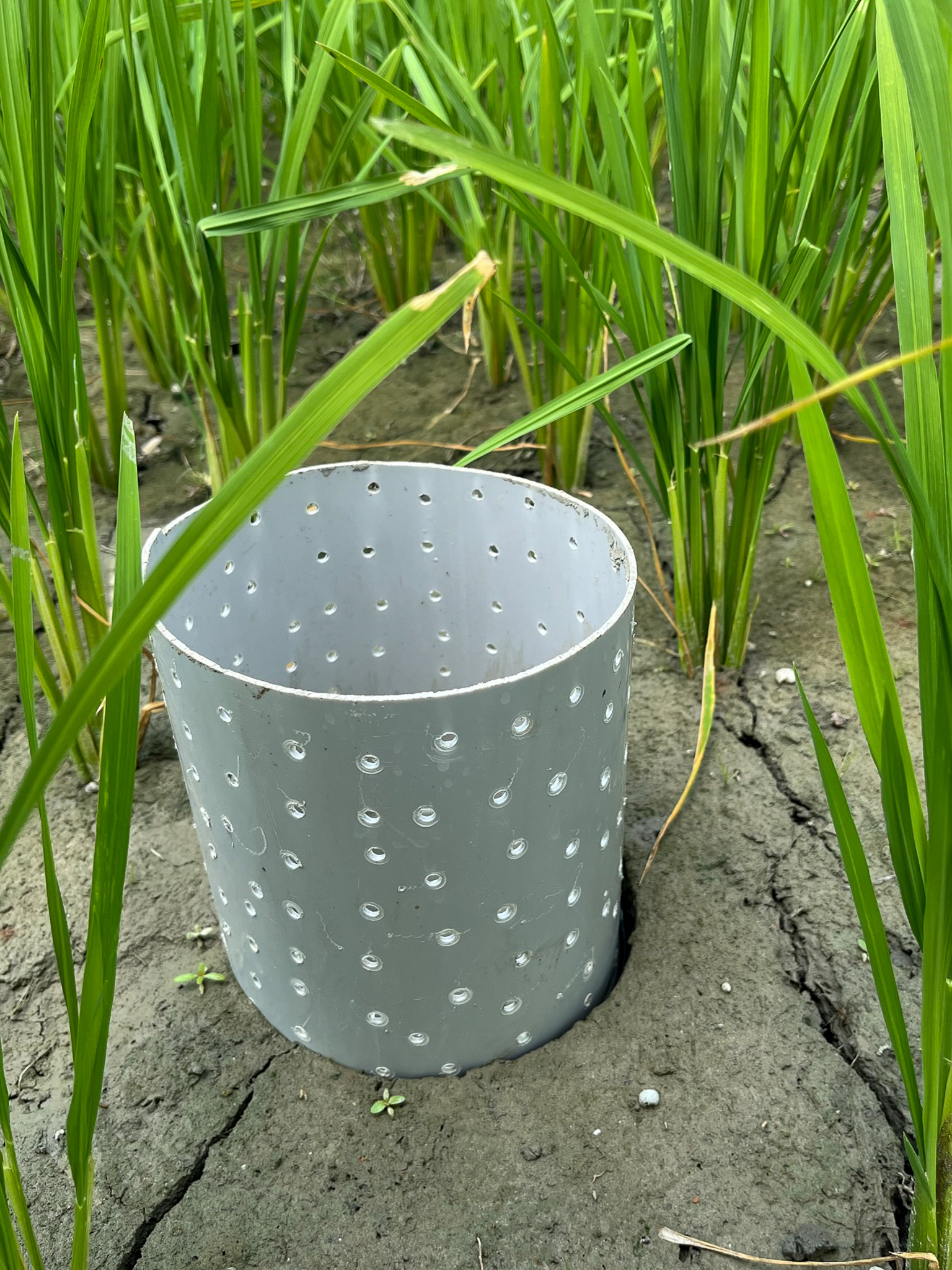
A field water tube is used to monitor water depth while implementing alternate wetting and drying. (Photo by Milorad Plavsic/TCI)
Globally, 50% of emissions from croplands come from flooded paddy cultivation, which creates methane through the decomposition of organic materials. India, which produces 22% of the world’s rice, is the leading emitter of rice-related methane. TCI research shows that alternate wetting and drying, a controlled irrigation technology that uses less water than continuous flooding, has the potential to reduce emissions associated with paddy cultivation by 3.96 metric tons annually by 2050, assuming a 70% adoption rate.
The policy brief presents a breakdown of emissions reductions for each of Bihar’s four agroclimatic zones. For alternate wetting and drying, Bihar’s southwest and northwest zones have the highest potential mitigation levels.
“Agricultural land in Bihar is quite diverse, necessitating interventions tailored to the context of different regions,” said Milorad Plavsic, TCI’s manager for strategic initiatives and project lead for Zero-Hunger, Zero-Carbon Food Systems. “By providing regional mitigation estimates, we can help policymakers direct resources to the areas where they can have the most impact.”
TCI’s research also shows that considerable emissions reductions can be achieved in Bihar’s livestock sector. The state is projected to have a cattle population of 46 million by 2050, by which time emissions from cattle are projected to reach 52-61 metric tons. Advanced artificial insemination and the use of anti-methanogenic feed supplements can reduce those emissions by 5.4-7.2 metric tons per year.
Advanced artificial insemination through the use of sex-sorted semen can allow farmers to improve productivity while maintaining smaller herd sizes, reducing overall emissions. TCI research shows that improved productivity among dairy cows should yield farmers INR 207.5 million in additional income by 2050. Anti-methanogenic feeds supplements, such as Harit Dhara, which was commercialized in the early 2020s, reduce the methane produced by cows during digestion.
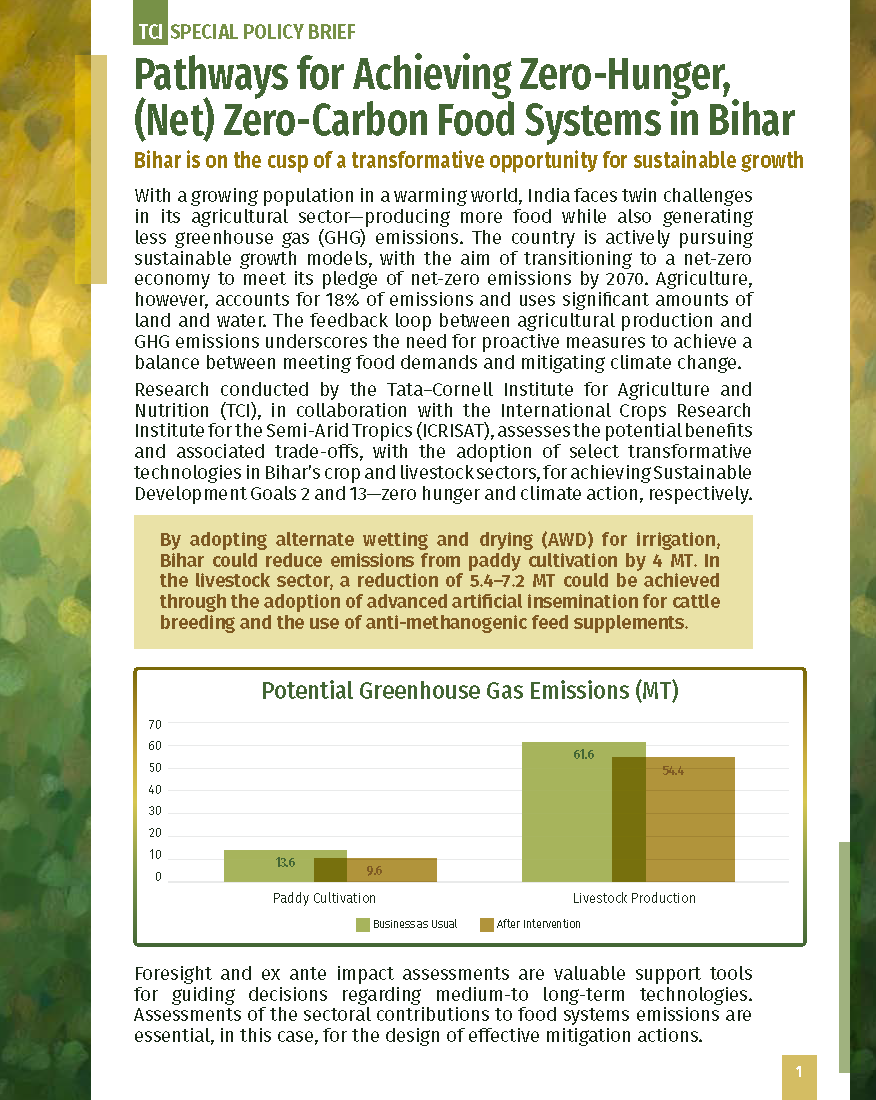
TCI’s special policy brief—Pathways for Achieving Zero-Hunger, (Net) Zero-Carbon Food Systems in Bihar—is available for download in PDF format.
The projections in the policy brief were calculated by TCI in collaboration with the International Crops Research Institute for the Semi-Arid Tropics using the CGIAR Research Program on Climate Change, Agriculture, and Food Security’s Mitigation Options Tool for Agriculture. TCI researchers also conducted a series of workshops and field visits in Bihar to identify suitable mitigation options.
In the next phase of the Zero-Hunger, Zero-Carbon Food Systems project, TCI is working with partners in Bihar to assess the viability of several interventions and generate evidence to support scaling them up through existing state programs. Researchers are focusing on reducing cattle herd size and emissions through the use of sex-sorted semen and anti-methanogenic feed supplements; achieving optimal water and nutrient usage in rice production through integrated management practices, including alternate wetting and drying; and using agrivoltaics to produce both solar power and food on the same farmland.
“With the effects of climate change being felt more and more each passing year, India must address the issue with the same urgency with which it is addressing hunger among undernourished populations,” Pingali said. “By focusing on the viability of existing technology, we hope to give policymakers in Bihar and across India the evidence that they need to implement effective solutions now.”
Featured image: Using anti-methanogenic feed supplements can reduce the amount of methane produced by cattle’s digestive processes. (Photo by Ian Dyball/Shutterstock)



